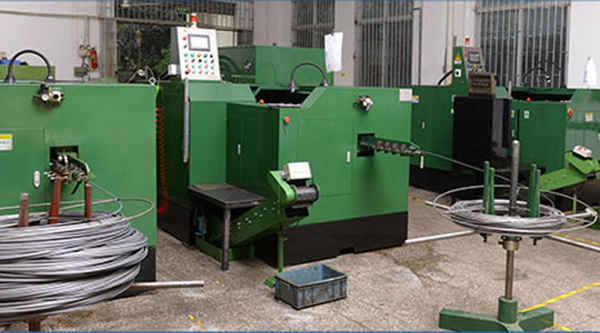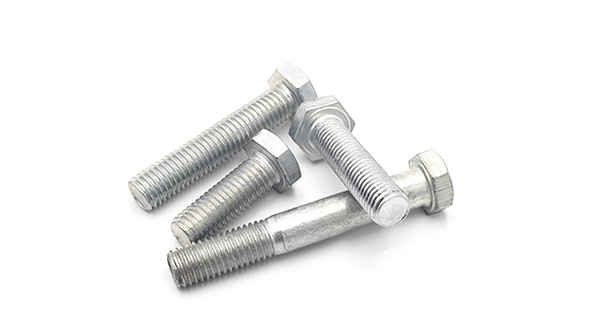What is the tolerance range of precision screws?
What is the tolerance range of precision screws?
Service Hotline
+86760-8787 8587We have more than ten years of production experience in the screw industry. The main products are: small flat head inner and outer nuts, 304 double-strand pull rivets, nickel-plated cap nuts that can be screwed by hand, high-strength cup head screws, boat-shaped slider-shaped block nuts, hexagon sockets Grade 4.8 Bolts, Flat Washer Screws, TM Carbon Steel Screws, Hexagon Joint Nuts, Single-Headed Copper Stud Nuts, Shaved Head Non-Knurled Screws, Anti-theft Anti-theft Anti-theft Screws, Anti-theft Anti-theft Anti-triangular Screws, Fixed Block Acrylic Screw Nuts, GB956.1 Fasteners such as washers, due to the different materials and specifications of the products, the prices are also different, please contact us if necessary.


The performance grade 8.8 of stainless steel bolts refers to the material's tensile strength limit of 800MPa and yield limit of 640MPa. The performance grades of stainless steel bolts, studs and studs are divided into 10 grades: from 3.6 to 12.9. The number before the decimal point represents 1/100 of the tensile strength limit of the material, and the number after the decimal point represents 10 times the ratio of the material's yield limit to the tensile strength limit. There are 7 grades of performance grades for nuts, from 4 to 12. The numbers roughly represent 1/100 of the minimum stress that the stainless steel nut is guaranteed to withstand. For unified inch threads, there are three thread grades for external threads: grades 1A, 2A and 3A, and three grades for internal threads: grades 1B, 2B and 3B, all of which are clearance fits. The higher the rating number, the tighter the fit. Classes 1, 1A and 1B, very loose tolerance classes, which are suitable for tolerance fits of internal and external threads. Grades 2, 2A and 2B are the most common thread tolerance grades specified for inch series mechanical stainless steel fasteners. Grades 3, 3A and 3B, screwed together to form the tightest fit, suitable for tight tolerance stainless steel standard parts, for safety critical designs. Metric threads, there are three thread grades for external threads: 4h, 6h and 6g, and three thread grades for internal threads: 5H, 6H, 7H. Thread fit is best combined into H/g, H/h or G/h. For bolts, stainless steel nuts and other refined fastener threads, the standard recommends 6H/6g fit. Carbon steel: The strength grade is marked by ? It consists of two separated numbers. The meaning of the number part before the ? in the marking code represents the nominal tensile strength, for example, 4 in grade 4.8 represents 1/100 of the nominal tensile strength of 400N/MM2. The meaning of the ? and the number part after the point in the marking code represents the yield-strength ratio, that is, the ratio of the nominal yield point or the nominal yield strength to the nominal tensile strength. For example, the yield point of grade 4.8 products is 320N/mm2. The strength grade mark of stainless steel products consists of two parts separated by —. The symbol before — in the sign code indicates the material. Such as: A2, A4 and other signs — indicate strength, such as: A2-70 Carbon steel: The mechanical properties of bolts can be divided into: 3.6, 4.6, 4.8, 5.6, 5.8, 6.8, 8.8, 9.8, 10.9, 12.9 in total 10 performance levels

When using a rivet nut, drill a hole corresponding to the outer diameter of the rivet nut on the thin wall, then place the rivet nut on the bolt of the special rivet gun, push the handle to screw in the rivet nut, and put it into the drilled hole. In the workpiece, squeeze the handle, the rivet nut expands, and the deformed skirt bulges and deforms. At this time, the workpiece is tightened. After riveting, the handle is pulled out, the bolt is released from the rivet nut, and the corresponding screw is screwed into the rivet nut threaded hole. , forming a tight riveted body.


The defect of the existing press-fit solution is: when the retaining ring is placed in the chamfering section or the guide section of the shaft head, the retaining ring cannot be accurately fixed, and the retaining ring is easy to tilt or fall, especially when the shaft head is located inside the bearing chamber depression, The inclination of the retaining ring will make it difficult to press the retaining ring, affect the production efficiency, and even cause the product to be scrapped.

Since the HDS series is a disc spring that can be folded or overlapped. The combination of the butt joint can increase the deformation of the disc spring group, and the combination of the overlapping method can increase the spring force of the disc spring group. The ideal installation method is to flatten as much as possible. The closer it is to the flattened state, the faster the tension torque increases, and the proper bolt tension can be obtained without a torque wrench.

The above content is uploaded by Yueluo or the Internet. If there is any copyright issue, please contact [email protected].

What is the tolerance range of precision screws?

How to choose the right stainless steel screw manufacturer?

Why is there an R angle under the head of the hexagon head s...

We have more than ten years of experience in screw industry ...

We have more than ten years of production experience in the ...

We have more than ten years of experience in screw industry ...

We have more than ten years of production experience in the ...